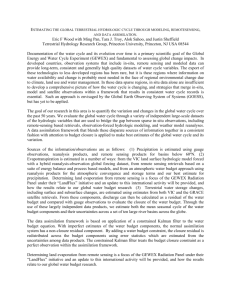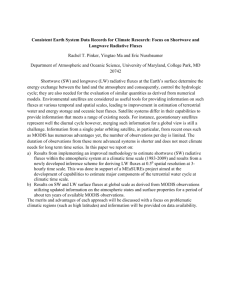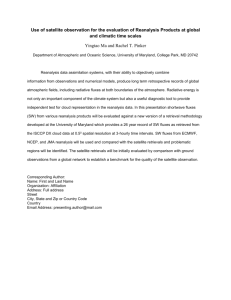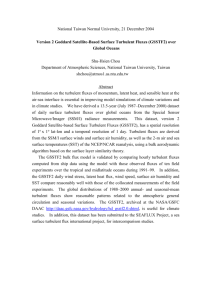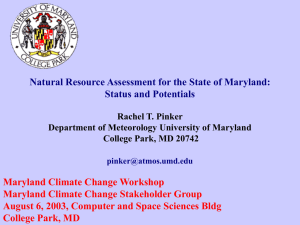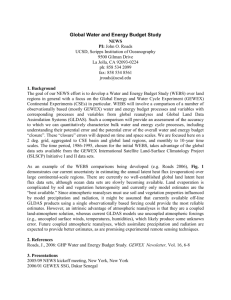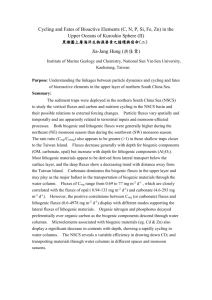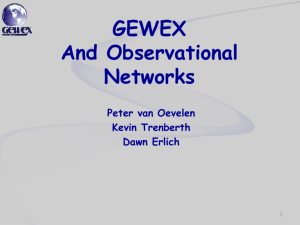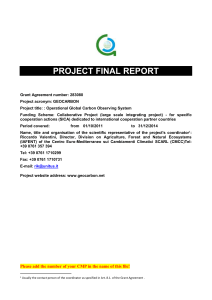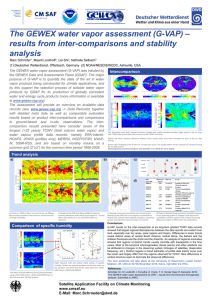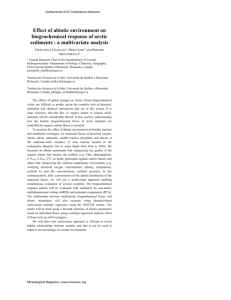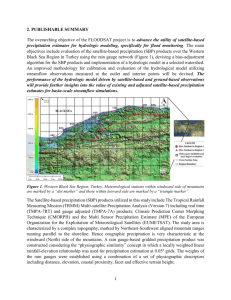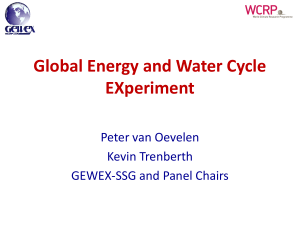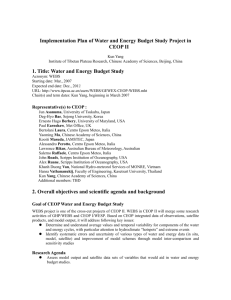A16: Use of Large-Scale, Satellite-Based Observations for Energy
advertisement
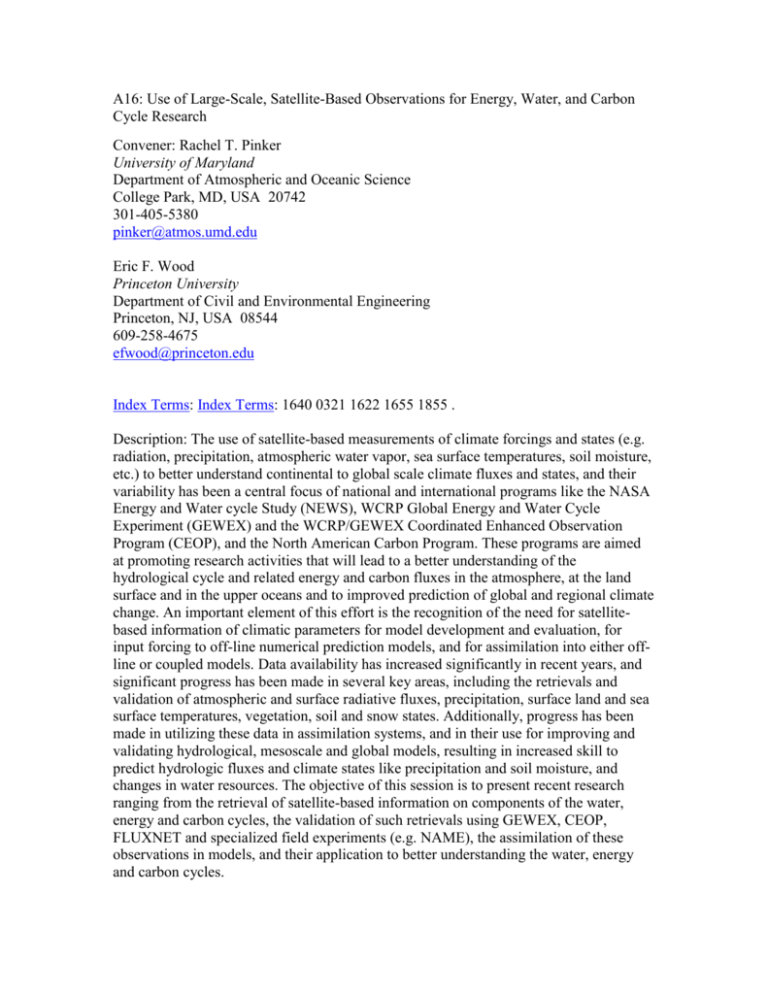
A16: Use of Large-Scale, Satellite-Based Observations for Energy, Water, and Carbon Cycle Research Convener: Rachel T. Pinker University of Maryland Department of Atmospheric and Oceanic Science College Park, MD, USA 20742 301-405-5380 pinker@atmos.umd.edu Eric F. Wood Princeton University Department of Civil and Environmental Engineering Princeton, NJ, USA 08544 609-258-4675 efwood@princeton.edu Index Terms: Index Terms: 1640 0321 1622 1655 1855 . Description: The use of satellite-based measurements of climate forcings and states (e.g. radiation, precipitation, atmospheric water vapor, sea surface temperatures, soil moisture, etc.) to better understand continental to global scale climate fluxes and states, and their variability has been a central focus of national and international programs like the NASA Energy and Water cycle Study (NEWS), WCRP Global Energy and Water Cycle Experiment (GEWEX) and the WCRP/GEWEX Coordinated Enhanced Observation Program (CEOP), and the North American Carbon Program. These programs are aimed at promoting research activities that will lead to a better understanding of the hydrological cycle and related energy and carbon fluxes in the atmosphere, at the land surface and in the upper oceans and to improved prediction of global and regional climate change. An important element of this effort is the recognition of the need for satellitebased information of climatic parameters for model development and evaluation, for input forcing to off-line numerical prediction models, and for assimilation into either offline or coupled models. Data availability has increased significantly in recent years, and significant progress has been made in several key areas, including the retrievals and validation of atmospheric and surface radiative fluxes, precipitation, surface land and sea surface temperatures, vegetation, soil and snow states. Additionally, progress has been made in utilizing these data in assimilation systems, and in their use for improving and validating hydrological, mesoscale and global models, resulting in increased skill to predict hydrologic fluxes and climate states like precipitation and soil moisture, and changes in water resources. The objective of this session is to present recent research ranging from the retrieval of satellite-based information on components of the water, energy and carbon cycles, the validation of such retrievals using GEWEX, CEOP, FLUXNET and specialized field experiments (e.g. NAME), the assimilation of these observations in models, and their application to better understanding the water, energy and carbon cycles.
